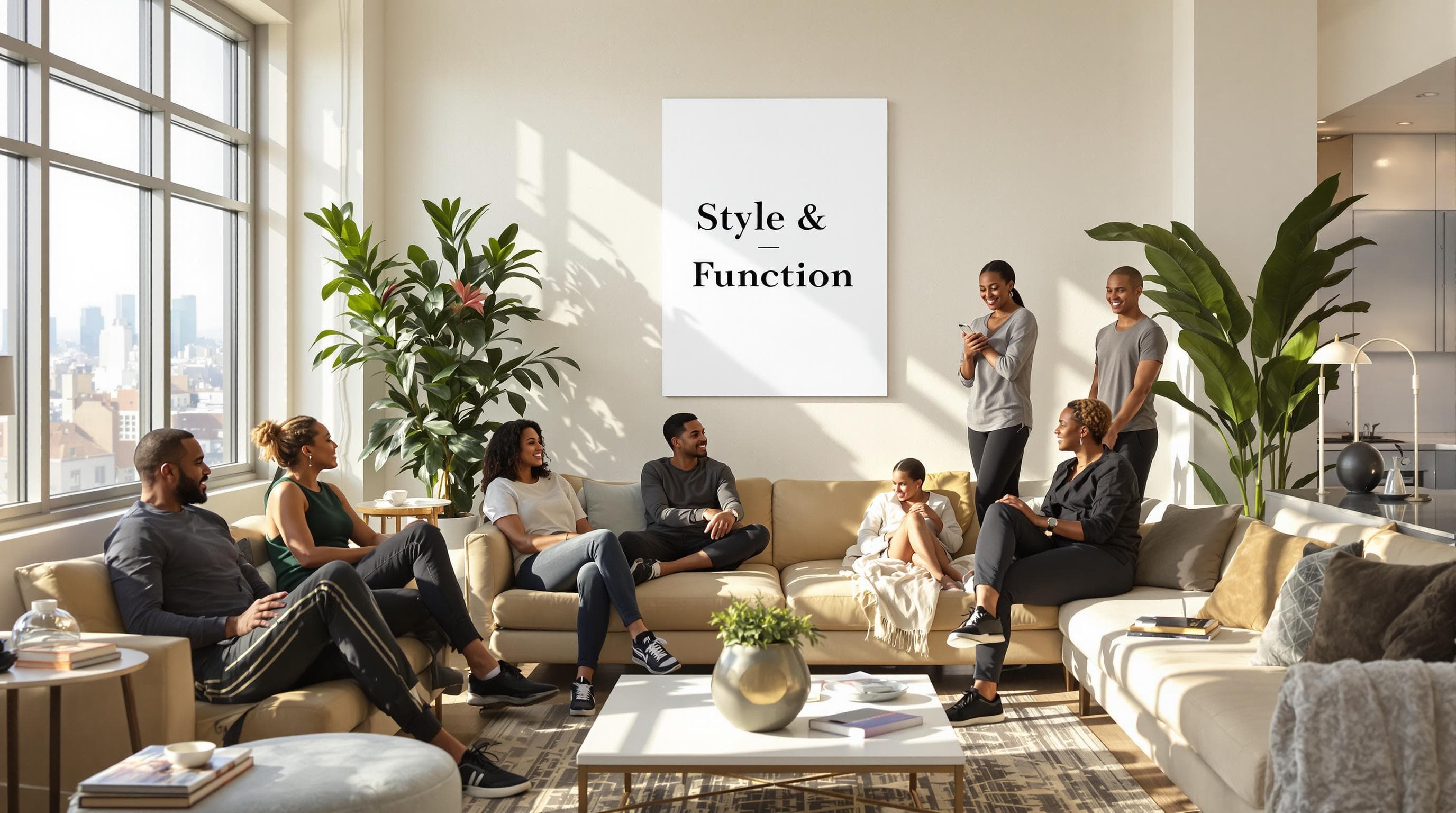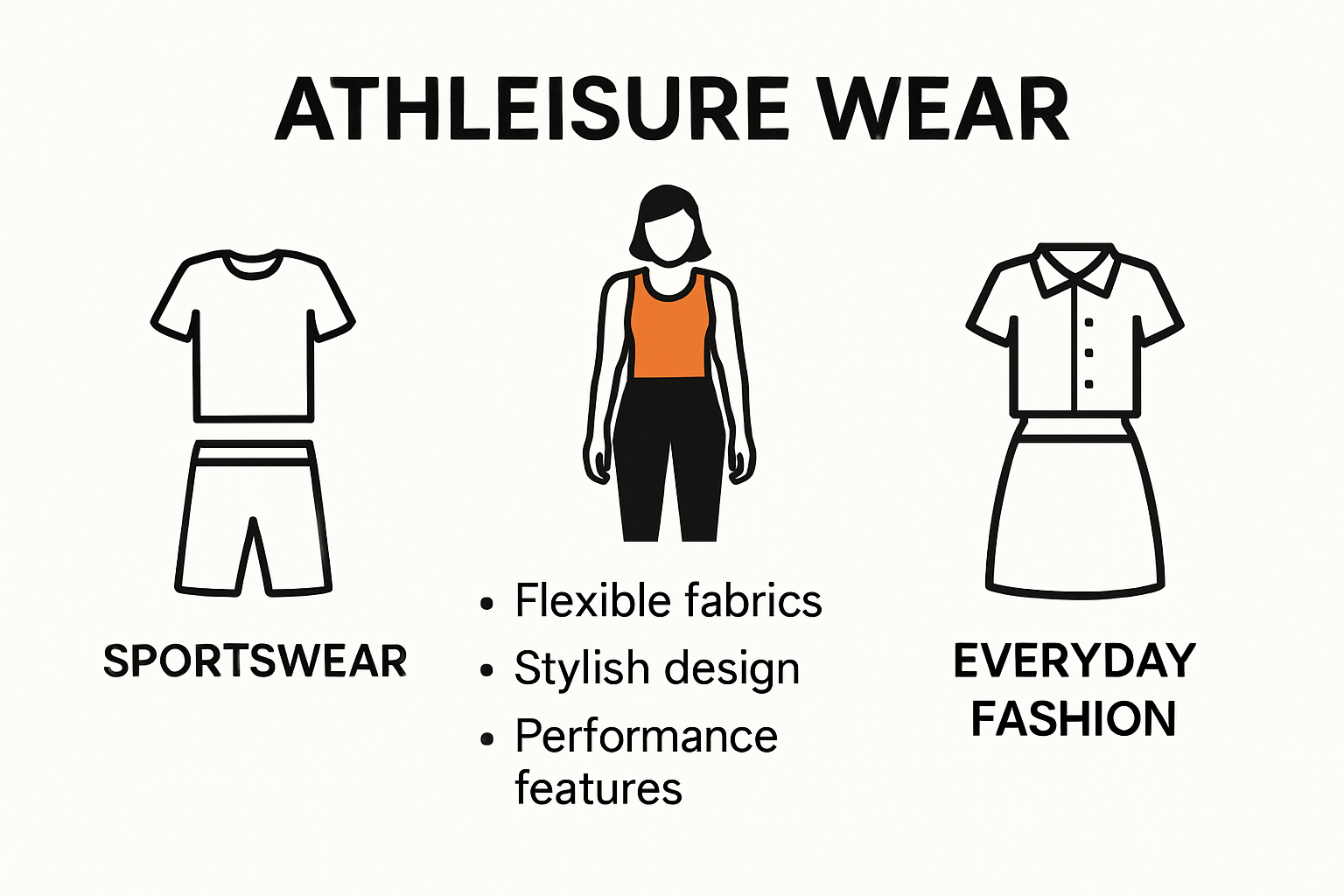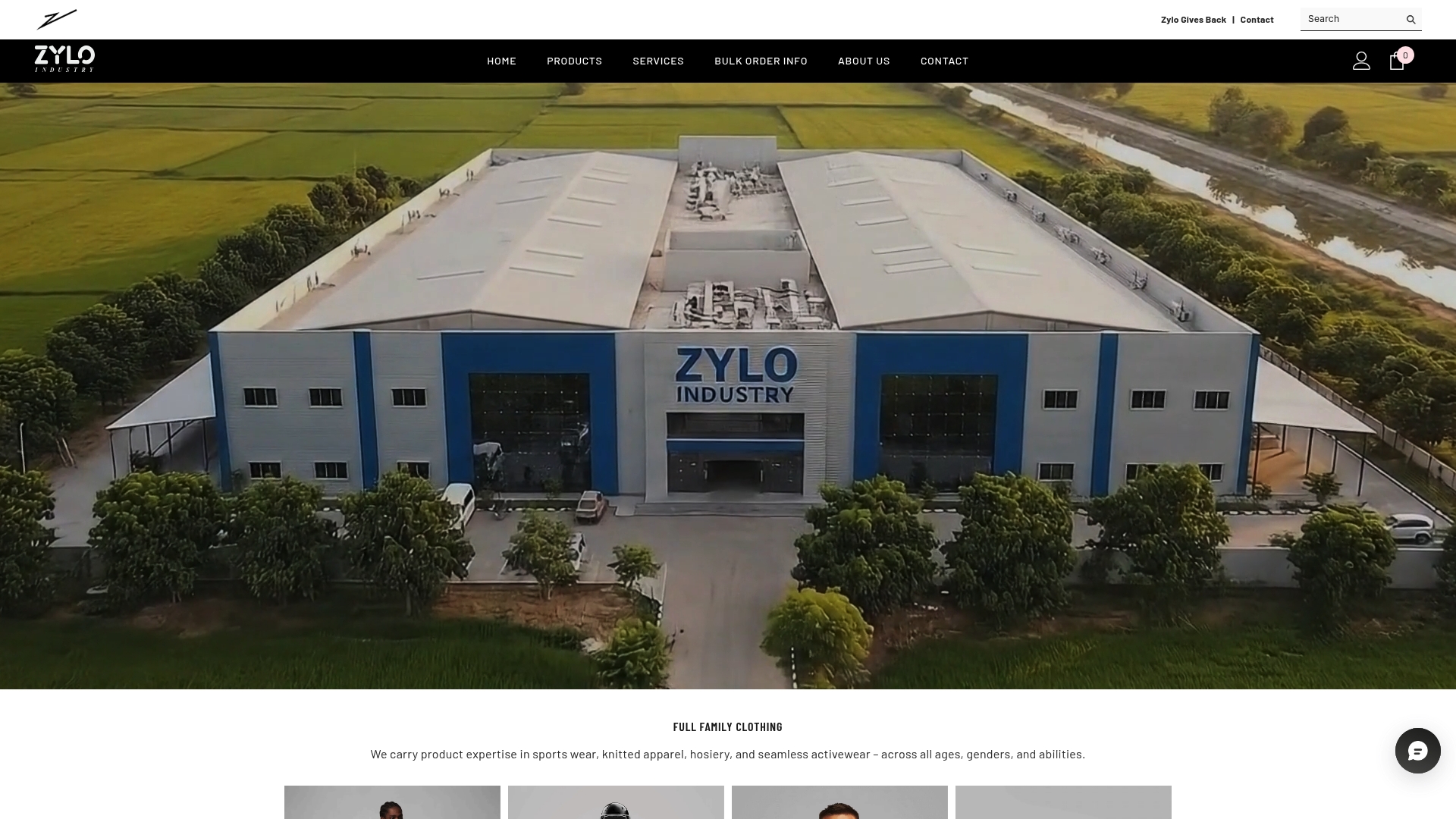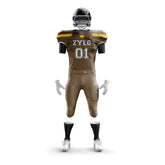What Is Athleisure Wear? Guide for Retailers & Teams 2025

Athleisure wear is taking over closets everywhere and for good reason. This trend goes way beyond yoga pants on weekends. The global athleisure market is set to reach a staggering $450 billion by 2028. Most folks think athleisure is just about looking sporty and feeling comfortable. Turns out, this category is driving high-tech innovation and changing what people expect from both fashion and fitness gear.
Table of Contents
- Defining Athleisure Wear In Modern Fashion
- Key Benefits For Retailers And Organizations
- Popular Athleisure Trends To Watch In 2025
- How To Choose The Right Athleisure For Your Needs
Quick Summary
| Takeaway | Explanation |
|---|---|
| Athleisure Blends Style and Functionality | Athleisure wear combines athletic performance features with stylish designs suitable for everyday use, reflecting a cultural shift in fashion. |
| Market for Athleisure is Rapidly Growing | The athleisure market is projected to expand from $320 billion in 2022 to $450 billion by 2028, indicating strong economic potential for retailers. |
| Embrace Technological Innovations | Future athleisure trends include smart apparel equipped with biometric monitoring and performance analytics, enhancing workout efficiency. |
| Sustainability is Key for Consumers | Increasing demand for eco-friendly practices has led brands to use sustainable materials, vital for attracting today’s conscious consumers. |
| Selecting Athleisure Requires Personal Evaluation | When choosing athleisure, consider fabric characteristics, performance needs, and personal style to ensure optimal comfort and functionality. |
Defining Athleisure Wear in Modern Fashion
Athleisure wear represents a revolutionary approach to personal style that blends athletic functionality with everyday fashion. This clothing category has transformed how people perceive and experience comfort in their wardrobe, breaking traditional boundaries between workout gear and casual attire.

The Evolution of Athleisure Wear
The concept of athleisure emerged as a response to modern lifestyle demands. According to Merriam-Webster Dictionary, athleisure is defined as casual clothing designed to be worn both for exercising and general use. This definition captures the essence of a trend that prioritizes versatility and comfort.
Key characteristics of athleisure wear include:
- Flexible Fabrics: Stretchy materials that allow unrestricted movement
- Stylish Design: Aesthetically pleasing clothing that transitions seamlessly between activities
- Performance Elements: Technical features borrowed from athletic wear
Cultural and Fashion Significance
Research from Science Direct highlights that athleisure represents more than just a clothing trend. It reflects a broader cultural shift towards prioritizing personal wellness, comfort, and functional fashion. The style has gained significant traction among professionals, athletes, and everyday consumers who seek clothing that supports an active, dynamic lifestyle.
Unlike traditional sportswear, athleisure wear is characterized by its ability to blur the lines between performance gear and street fashion. Consumers can now attend a workout class, run errands, or meet friends for coffee while wearing the same outfit. This versatility has been a key driver of the athleisure movement.
Technical and Design Innovations
According to EBSCO Research, athleisure goes beyond simple clothing. It incorporates advanced design elements typical of performance apparel, such as moisture-wicking fabrics, flat seams, and ergonomic cuts. These technical innovations ensure that the clothing not only looks good but also provides practical benefits like temperature regulation and enhanced mobility.
The rise of athleisure wear demonstrates a significant shift in fashion philosophy. No longer are comfortable, performance-oriented clothes confined to gym spaces. Instead, they have become a mainstream fashion statement that reflects the modern individual’s desire for practicality, style, and personal expression. As work environments become more flexible and lifestyle patterns continue to evolve, athleisure wear is poised to remain a crucial component of contemporary fashion.
To help clarify the key characteristics of athleisure wear described above, the following table organizes the main features and their respective benefits:
Key Characteristics of Athleisure Wear
| Feature | Description | Benefit |
|---|---|---|
| Flexible Fabrics | Stretchy materials for unrestricted movement | Enhanced comfort and range of motion |
| Stylish Design | Fashion-forward, aesthetically pleasing clothing | Seamless transition between activities |
| Performance Elements | Technical features from athletic apparel | Improved functionality and versatility |
| Moisture-Wicking | Fabrics that manage sweat and moisture | Keeps wearer dry and comfortable |
| Ergonomic Cuts | Garments designed for the body’s movement | Reduces friction and increases mobility |
Key Benefits for Retailers and Organizations
Athleisure wear presents a transformative opportunity for retailers and organizations seeking to capitalize on a rapidly expanding market segment. Understanding the strategic advantages of this clothing category can help businesses develop targeted approaches that maximize growth and customer engagement.
Market Growth and Economic Potential
The athleisure market represents an extraordinary economic opportunity. Capillary Tech Research indicates that the market is projected to grow from $320 billion in 2022 to $450 billion by 2028. This substantial growth trajectory offers retailers and organizations significant potential for revenue expansion and market penetration.
Key economic benefits include:
- Diverse Revenue Streams: Ability to serve multiple consumer segments simultaneously
- High Profit Margins: Premium pricing potential for versatile clothing items
- Repeat Customer Potential: Consumer demand for functional and stylish clothing
The following table summarizes the athleisure market growth projections and opportunities given in the previous section:
Athleisure Market Growth (2022–2028)
| Year | Global Market Size | Growth Driver |
|---|---|---|
| 2022 | $320 billion | Expanding consumer demand |
| 2028 | $450 billion | Lifestyle changes, innovation |
Strategic Business Advantages
Retailers face unique challenges in the athleisure market. According to Zigpoll Research, successfully navigating this segment requires strategic management of consumer trends, inventory risk, product quality, and supply chain complexities.
Building robust supplier partnerships emerges as a critical strategy for organizations looking to excel in the athleisure market. These partnerships can help mitigate risks associated with rapidly changing fashion trends and consumer preferences.
Operational Considerations and Risk Management
ETP Group Research highlights that shipment delays and product authenticity are significant challenges in the athleisure segment. Retailers must develop comprehensive strategies to address these potential obstacles, including:
- Implementing rigorous quality control processes
- Establishing transparent supply chain management
- Developing rapid response mechanisms for market changes
- Creating strong authentication protocols to combat counterfeit products
Successful organizations in the athleisure market will distinguish themselves by combining innovative product design, responsive customer engagement, and agile business practices. By understanding the unique dynamics of this market segment, retailers can position themselves to capture significant market share and build lasting customer relationships.
Popular Athleisure Trends to Watch in 2025
The athleisure landscape in 2025 is set to transform dramatically, driven by technological innovation, sustainability concerns, and evolving consumer preferences. Retailers and organizations must stay ahead of these emerging trends to remain competitive in this dynamic market.
Technological Integration and Smart Apparel
Cutting-edge research reveals a groundbreaking development in smart sportswear technology. Researchers have developed advanced athletic wear featuring integrated graphene-based strain sensors that can monitor exercise quality in real-time. According to the study, these intelligent garments achieve an impressive 92.3% accuracy in classifying exercise conditions, opening new frontiers in fitness tracking and performance optimization.
Emerging technological features include:
- Biometric Monitoring: Embedded sensors tracking heart rate, muscle exertion, and breathing patterns
- Performance Analytics: Real-time feedback on exercise execution and potential injury prevention
- Adaptive Fabric Technologies: Materials that respond to body temperature and movement
Sustainability and Ethical Fashion
Linkewire Market Research indicates that the athleisure market is projected to reach a compound annual growth rate of 6.16% by 2030. This growth is significantly driven by consumer demand for sustainable and environmentally conscious clothing options. Brands are responding by incorporating innovative materials and ethical production methods.
Key sustainability trends include the use of recycled polyester, plant-based fabrics, and production processes that minimize environmental impact. Consumers are increasingly prioritizing brands that demonstrate a commitment to ecological responsibility and transparent supply chains.
Lifestyle and Versatility
Accio Business Insights highlights a critical shift in athleisure design philosophy. The focus is moving beyond traditional performance wear to create versatile garments that seamlessly transition between different aspects of modern life. This trend reflects the changing work and lifestyle patterns of contemporary consumers.
Designers are creating clothing that can effortlessly move from workout sessions to professional environments, social gatherings, and casual outings. The emphasis is on multi-functional designs that offer comfort, style, and adaptability. Inclusivity is also a key consideration, with brands developing ranges that cater to diverse body types, fitness levels, and personal style preferences.
As we approach 2025, the athleisure market is poised for unprecedented innovation. Successful brands will be those that can effectively combine technological sophistication, sustainable practices, and design flexibility. Organizations that can anticipate and respond to these evolving consumer demands will be best positioned to capture market share and drive meaningful innovation in the athleisure sector.
How to Choose the Right Athleisure for Your Needs
Selecting the ideal athleisure wear requires a strategic approach that balances personal style, functional needs, and performance requirements. Understanding how to navigate the diverse landscape of athleisure clothing can help individuals make informed choices that enhance both comfort and aesthetic appeal.
Understanding Individual Performance Requirements
Performance Enhancement & Health Research emphasizes the critical importance of form-fitting designs that allow unrestricted movement. When choosing athleisure wear, consumers should consider their specific activity levels and lifestyle demands.
Key performance factors to evaluate include:
- Fabric Elasticity: Materials that provide maximum flexibility
- Range of Motion: Clothing that supports natural body movements
- Intended Use: Versatility across different activities and settings
Gender-Specific Considerations
According to Sustainability Research, male and female consumers have distinctly different priorities when selecting athleisure wear. Male customers tend to prioritize functional purpose, while female consumers place greater emphasis on daily life suitability and aesthetic design.
This nuanced approach suggests that retailers and consumers should focus on:
- Comfort-driven design elements
- Highly elastic materials
- Stylish configurations that support multiple lifestyle contexts
The following table summarizes the differences in athleisure selection priorities by gender as discussed above:
Athleisure Selection Priorities by Gender
| Gender | Top Priority | Additional Considerations |
|---|---|---|
| Male | Functional purpose | Comfort, elasticity, performance |
| Female | Daily life suitability, aesthetic design | Comfort, style, versatility |
Technical Selection Criteria
Medindia Health Research recommends prioritizing moisture-wicking materials and clothing that supports movement while preventing potential injuries. Consumers should evaluate athleisure wear based on several critical technical factors:
- Breathability of fabric
- Moisture management capabilities
- Compression and support features
- Temperature regulation properties
Successful athleisure selection goes beyond simple aesthetic preferences. It requires a holistic understanding of personal fitness goals, lifestyle requirements, and individual comfort needs. By carefully evaluating fabric technologies, design innovations, and personal performance demands, consumers can curate a wardrobe that seamlessly blends functionality with style.
Ultimately, the right athleisure wear should feel like a second skin - supporting movement, adapting to various environments, and reflecting personal identity. Whether preparing for an intense workout, running errands, or transitioning between professional and casual settings, thoughtfully selected athleisure can provide the perfect blend of comfort, performance, and personal expression.
Frequently Asked Questions
What is athleisure wear?
Athleisure wear is a category of clothing that combines athletic performance features with stylish designs for everyday use. It allows for versatile outfits suitable for both workouts and casual outings.
Why is athleisure wear becoming popular?
Athleisure wear is gaining popularity due to its blend of comfort, functionality, and style, reflecting a cultural shift towards wellness and active lifestyles. It appeals to consumers who seek clothing that supports various daily activities.
What should retailers consider when selling athleisure?
Retailers should focus on market trends, consumer needs, and product quality. Building strong supplier partnerships and understanding pricing strategies can help merchants succeed in the growing athleisure market.
How can I choose the right athleisure wear for my needs?
To select the right athleisure wear, consider your specific performance requirements, fabric characteristics, and personal style. Evaluate factors such as breathability, moisture-wicking properties, and how well the clothing adapts to different activities.
Elevate Your Athleisure Offering with Proven Quality
If your business is feeling the pressure of fast-growing athleisure demand or struggling to keep up with the latest innovations in fabric technology and design, you are not alone. The article highlighted common challenges like shifting market trends, the need for versatile and stylish performance wear, and the risk of unreliable suppliers. At Zylo Industry, we recognize how crucial it is for retailers, teams, and organizations to stay ahead with authentic, functional, and attractive apparel.

Choose a manufacturing partner who understands the technical requirements and trends shaping the future of athleisure. Zylo Industry delivers durable, moisture-wicking, and custom-designed sportswear so you can meet the evolving needs of your customers and athletes. Visit our official site to discover how our expertise in advanced fabrics and personalized team uniforms can help you stand out. Secure your next collection with us today and set your brand apart in the competitive athleisure market.
Recommended
- Charger Sublimated Flag Football – Zylo Industry
- Custom Logo Men′s Acid Wash Baggy Jorts Distressed Embroidered Ripped – Zylo Industry
- Custom Logo Men′s Acid Wash Baggy Jorts Distressed Embroidered Ripped – Zylo Industry
- Personalized Denim Jorts with Custom Button Details – Zylo Industry
- Fashionable Compression Stockings: Stylish Support for 2025 – Fit Stockings
- Digital Marketing for Retailers: Proven Strategies for 2025 | Ibrandmedia


